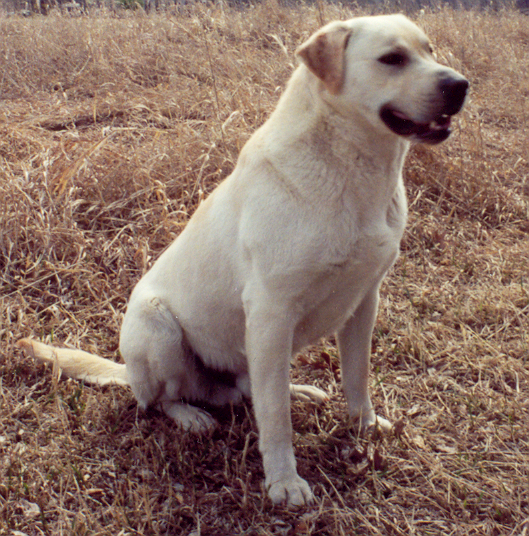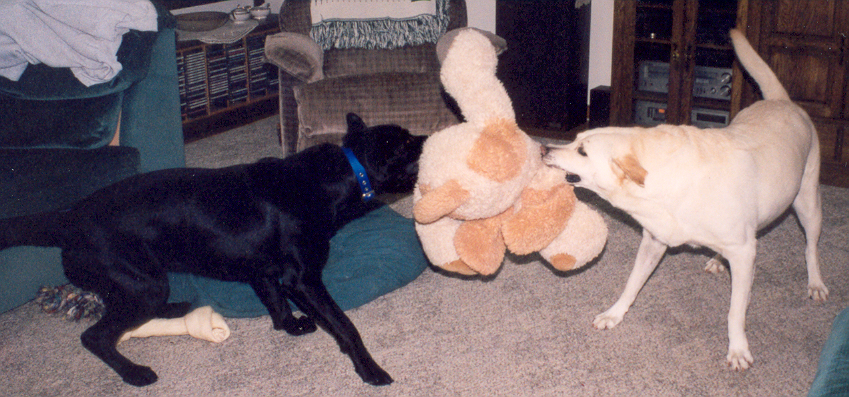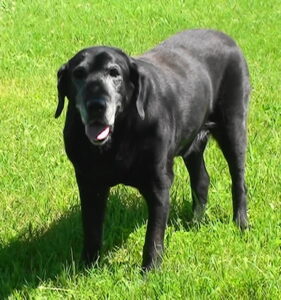Barks Blog
For a Healthier Life, Don’t Let Your Pet Get Overweight
Years ago my wife and I adopted a wonderful yellow Labrador named Charlie.

At first, he had normal weight, at around 75 pounds. He steadily gained weight until he reached 100 pounds. A veterinary exam determined Charlie had a thyroid problem. With daily medication his weight returned to normal.
Charlie lived over 14 years, but his quality of life was cut short by severe arthritis. Like other pet owners who have lost their pets too soon, I felt cheated.
In Psychology Today, Stanley Coren, Ph.D., DSc, FRSC commented on a research study and in summary wrote “…many people consider their dogs to be an integral part of their family”. Dogs have relatively short lives and the pain of losing them can be just as deep and lasting as losing a human family member.
Perhaps it is out of love that so many people feed their pets more than they actually require. I take great pleasure in feeding my dogs, horse and sheep and feel that I am taking care of them and expressing affection. But too much of a good thing can be a bad thing.
The Association for Pet Obesity Prevention reports 100 million American pets are overweight or obese, including 59 percent of cats and 54 percent of dogs.
Our pets are paying the price with increased risks of preventable heath problems and shorter lives. They suffer higher rates of arthritis, urinary tract disease, liver disease, low thyroid function, knee ligament injuries, diabetes, spinal disc disease, kidney disease, high blood pressure and heart failure.
In “Companion Animal Psychology” Zazie Todd, Ph.D. wrote about recent research that studied 50,000 pet dogs of 12 breeds and gave us a measurement of the loss in terms that we can grasp. Smaller breeds lose more lifespan than larger dogs. For example, overweight Yorkshire Terriers lose two years of life.
I think all pet owners would love to have another two years to spend with their companions, if only there were a way to make it so. Fortunately helpful advice is available.
The Association for Pet Obesity Prevention offers free information including a pet weight check with graphics of a dogs and cats at various weights, and a scoring system. Pet owners can compare the graphics to their own pets and make informed decisions about feeding.
There is also information about ideal weight ranges for numerous breeds, plus dog and cat daily caloric needs so pet owners can determine how much food reduction is required for maintenance or safe weight loss.
The “Weight Translator” really raised my eyebrows. It compares pet weight by breed with that of human males or females. For instance, it compares a 12-pound Yorkie with woman weighing 218 pounds. I can only imagine how 100 pound Charlie would have compared to the weight of a man.
My experience with Charlie motivated me to be more careful about our other Labrador, Jake.
He was lighter to start with, and we gave him a measured amount of food for his breakfast and supper. If he got additional treats, we reduced his meal size.

These day I rely heavily upon The Whole Dog Journal (WDJ), a monthly periodical devoted to canine health, nutrition, training and behavior. WDJ accepts no advertisements and publishes an annual review of dry and canned dog foods for quality and price, among other topics to help our pets live longer, happier lives.
Once I learned how to read dog food labels and what ingredients to look for, I chose to only buy high-quality foods and to avoid some treats altogether due to their unhealthy ingredients and processing.
Jake got plenty of daily exercise, including walks, jogs, retrieving toys and playing tug. For a 60-pound dog he was strong and athletic, sometimes dragging me across the living room when he won a game of tug. The rug burns might have bothered me had I not been laughing so hard.

Regular veterinary visits helped us avoid preventable ailments and gave us the benefit of objective feedback from our veterinarian. Jake also got prompt medical care for any injuries he sustained, and he was rather accident prone… such as when he ventured too close to my horse while she was in her stall and was kicked in the head for his intrusion.
Jake lived a long, healthy life and nearly reached 16 years of age. For any Labrador that is quite an accomplishment. For Jake, it was something of a miracle.
As Maya Angelou famously said, “Do the best you can until you know better. Then, when you know better, do better.”
Now Buddha and Gandhi are our senior dogs. They are both in great shape and are getting the best stewardship and care I can muster. As I always say to pet stewards, be your dog’s best advocate. Or as Spock might say to our dogs, live long and prosper!

References:
Association for Pet Obesity Prevention. https://petobesityprevention.org/
Companion Animal Pyschology, “Overweight Dogs Don’t Live as Long, and Scientists Have Calculated How Much Less”, posted 3-6-19, Zazie Todd. Ph.D. https://www.companionanimalpsychology.com/2019/03/overweight-dogs-dont-live-as-long-and.html?utm_source=feedburner&utm_medium=email&utm_campaign=Feed%3A+CompanionAnimalPsychology+%28Companion+Animal+Psychology+by+Zazie+Todd+PhD%29
Psychology Today, “New Proof That we Consider Dogs Family Members”, posted 6-8-16, Stanley Coren, Ph.D., DSc, FRSC. https://www.psychologytoday.com/us/blog/canine-corner/201606/new-proof-we-consider-dogs-be-family-members
Salt, C., Morris, P. J., Wilson, D., Lund, E. M., & German, A. J. (2019). Association between life span and body condition in neutered client‐owned dogs. Journal of Veterinary Internal Medicine, 33(1), 89-99. https://doi.org/10.1111/jvim.15367
Samantha A. Deffler, Cassidy Fox, Christin M. Ogle & David C. Rubin (2016). All my children: The roles of semantic category and phonetic similarity in the misnaming of familiar individuals. Memory & Cognition, DOI 10.3758/s13421-016-0613-z
The Whole Dog Journal. https://www.whole-dog-journal.com/

